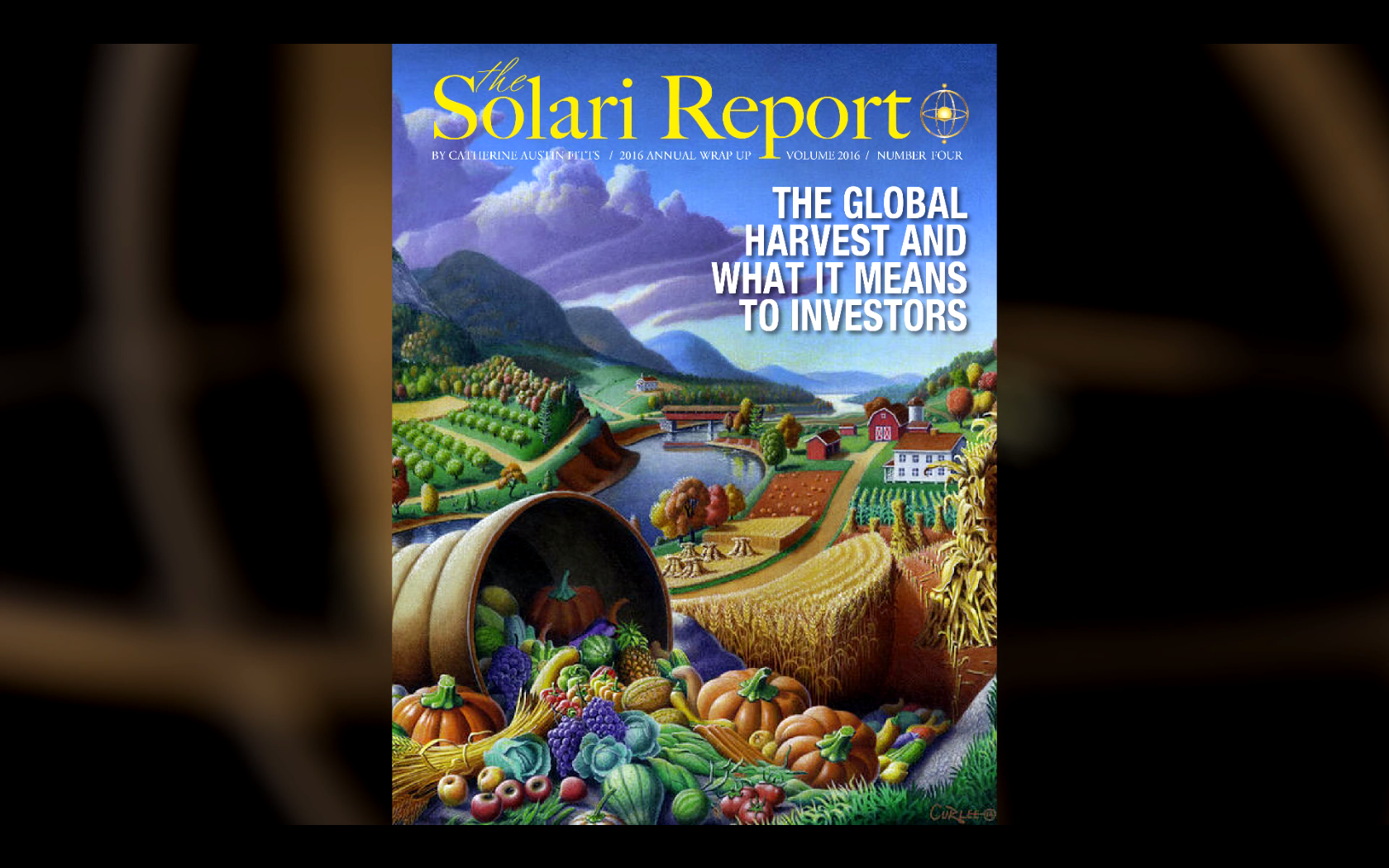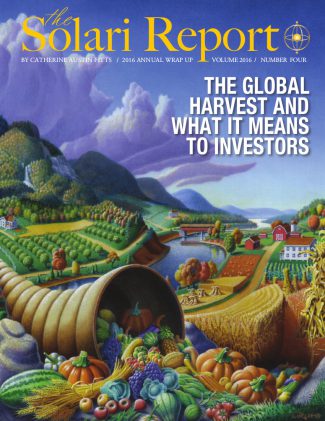
“If GATT succeeds and we are able to impose modern methods of agriculture worldwide, so as to bring them to the level of Canada or Australia, what will happen? 2.1 billion people will be uprooted from the land and chased into the towns throughout the world. It is the single greatest disaster [in our history], greater than any war. We have to change priorities…If not, and we chase 2.1 billion people into the slums of the towns, we will create on a scale unheard of mass migration…We would be creating mass waves of migration which none of us could control.” ~ Sir James Goldsmith, 1994 Globalization Warning
Read the Web Presentation
Read the written presentation of the 2016 Annual Wrap Up here.
Read the Flipbook
Read the Flipbook of the 2016 Annual Wrap Up here.
Read the Digital Magazine PDF
Click to download/view the PDF.
Listen to the Wrap Up MP3 audio file
Download the Wrap Up audio file
By Catherine Austin Fitts
This week on the Solari Report, I shall present the final part of the 2016 Annual Wrap Up – The Global Harvest and What It Means to Investors.

We all have a personal, intimate connection with food. We shop, we cook, and some of us garden, and we all eat.
We rarely focus our attention, however, on the powerful role that agriculture plays in global geopolitics or economic warfare. A review of work force or GDP in 2015 indicates that agriculture constituted a relatively small percentage. For example, agriculture as a percentage of GDP was 1.3% in the United States, 1.6% in the Euro area and 5.34% in East Asia. These figures compare with a percentage for industry as a percentage of GDP in the US, Euro area and East Asia of 20.7%, 24.3% and 34.5% respectively.
Most of us are more likely to know someone in information technology, energy,or real estate than in farming.
Food, however, is that essential good with a powerful, inelastic demand, which drives so many other fundamentals. This fact is one of the reasons I was thrilled when Harry Blazer agreed to produce the Solari Report Food Series. If we are going to be succeed at building a human society, as opposed to an inhuman society, we have to get the agricultural model and food right. Indeed, one of the reasons that the US unipolar implementation of a “new world order” has failed is that it included a vision for centrally controlled global agriculture that has failed. Now we need to find the right agriculture and economic models that will work in a multipolar world.
The goal of our discussion this week is to help you to understand the role of food in the emerging battle over the political and economic models we will adopt as the shift to a global economy and a multiplanetary civilization continues. These insights will help you understand:
- the political and economic battles raging around us; and,
- the power of taking steps in our own lives to increase the chances that we and our children will live in a human culture and healthy environment. (See the “Popsicle Index Rising” scenario in the 2017: Get Ready, Get Ready, Get Ready section accessible in the 2016 Annual Wrap Up web presentation – see link in the Subscriber Links section of this and the last three weeks commentaries.)
In Let’s Go to the Movies, please watch Sir James Goldsmith’s 1994 globalization warning. It is the single most prophetic description of what has been happening globally since the institution of the Uruguay Round of GATT and the World Trade Organization. If you want to understand the geopolitical and economic role of food in the world economy today, it is a must watch. No one else has communicated the importance of aligning culture, economy, and environment better than Goldsmith, whose business career involved extensive holdings and deep understanding of global agriculture and food distribution.
Talk to you Thursday!
